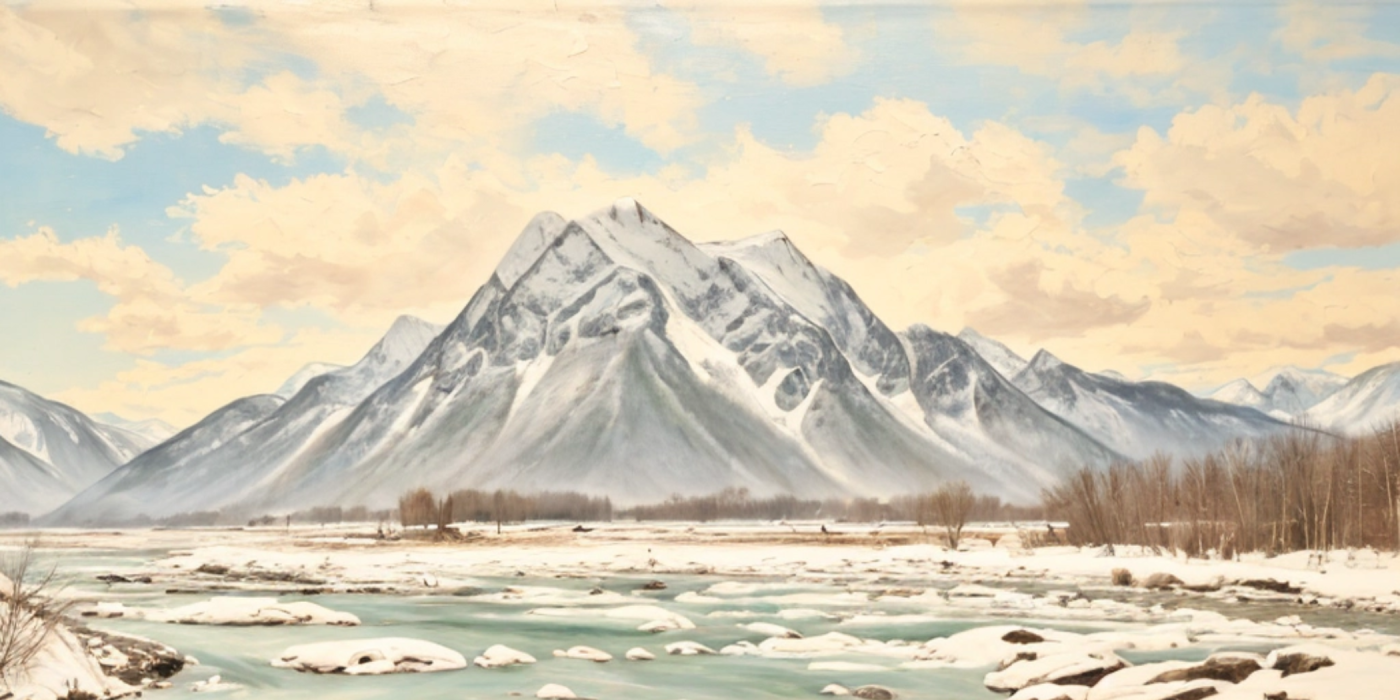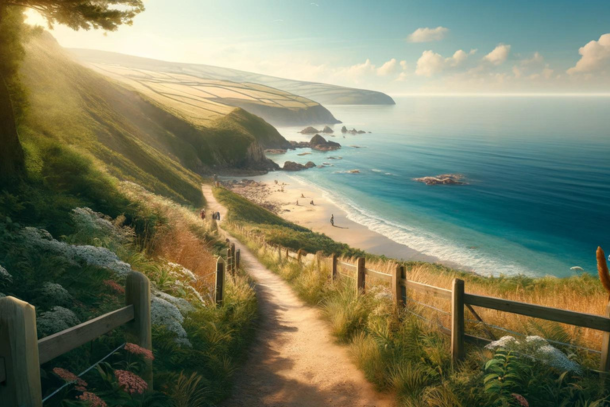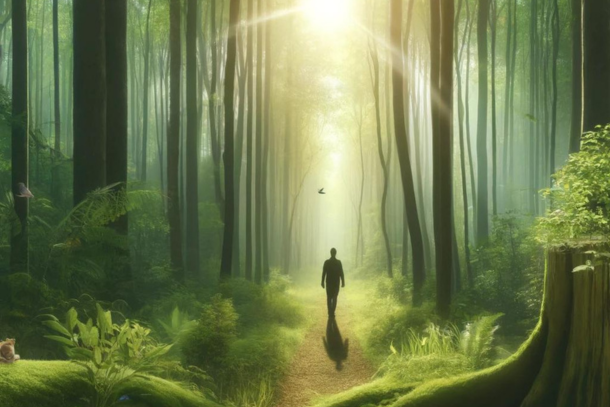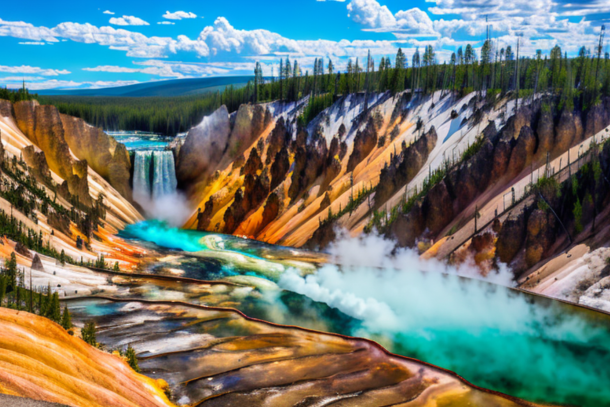Nature Drawing Tips for Beginners

At its heart, nature drawing is a celebration of the world around us. It's a delicate dance between observation and interpretation, where the artist becomes a silent observer, a patient chronicler of the myriad wonders of nature. As your pencil traces the contours of a leaf, the silhouette of a bird, or the rough bark of a tree, you find yourself sinking into a tranquil state of mindfulness. Nature drawing isn't merely an artistic endeavour; it's a therapeutic exercise that weaves together the threads of creativity and contemplation.
The appeal of nature drawing lies in its simplicity and accessibility. You don't need to have a studio filled with expensive equipment or the ability to paint grandiose masterpieces. All you need is a pencil, some paper, and the world outside your window. Nature drawing invites us to slow down, connect with the world around us, and express that connection through the universal language of art.
Navigating this Article
This article is a beginner's guide to the enchanting world of nature drawing. We'll introduce you to the essential tools you'll need to get started, from sketchbooks to pencils of varying hardness. We'll guide you through the basic techniques of drawing - observation, sketching, shading, and more - and give you practical exercises to hone these skills.
Next, we'll explore the myriad elements of nature - plants, trees, animals, landscapes - and share tips on capturing their essence on paper. And finally, we'll talk about the importance of regular practice, patience, and finding inspiration in the world around you. So grab your pencil, and let's embark on this artistic journey together.
Essential Tools for Getting Started
Every artist begins their journey with a canvas and tools. In the case of nature drawing, your canvas is the sketchbook, and your tools could range from a simple pencil to a set of colours. Here, we'll go through some of the fundamental tools needed to set the stage for your nature drawing journey.
Sketchbooks
A sketchbook is the heart of your artistic toolkit. For beginners, a medium-sized sketchbook with good-quality paper (about A4 size) is usually a great starting point. It's large enough for detailed drawings yet compact enough to carry with you for outdoor sketching. Consider a sketchbook with perforated pages if you like to display your drawings or gift them to others.
Pencils
Your primary tool will be a pencil, and there's a bit more to it than the average writing implement. Artists' pencils come in different grades of hardness, from the softer 'B' grades to the harder 'H' ones. A set of drawing pencils that includes a range, say from 2H to 6B, can provide the versatility you need for various shading and detailing techniques.
Erasers
An eraser is just as essential as a pencil in your drawing toolkit. A good-quality white eraser is excellent for removing pencil marks without smudging. For more precision, a kneaded eraser can be shaped into fine points to erase small areas without affecting the surrounding work.
Additional Tools
While the above are the bare essentials, as you progress, you may want to experiment with other tools like charcoal, coloured pencils, or even watercolours. These can add depth and vibrancy to your drawings, bringing your nature scenes to life.
Remember, choosing the right tools is important, but maintaining them is equally crucial. Keep your pencils sharp, erasers clean, and sketchbook safe. Your tools are your companions on this artistic journey, so treat them with care.
Basic Drawing Techniques
Observing Your Surroundings
The first and perhaps most crucial technique in nature drawing is observation. Developing keen observational skills allows you to notice and capture the intricate details of your subject. Spend time with your chosen subject in nature - it could be a leaf, a flower, or a landscape. Notice its shape, texture, and colour, and try to understand its structure before you begin drawing.
Practical exercise: Choose a natural object and study it closely for a few minutes. Write down the details you observe and then try to draw them without looking at the object.
Sketching Outlines
Once you've studied your subject, you can start to draw. Begin with a light, loose sketch to outline the general shape and proportion of your subject. Remember, this isn't about getting it perfect at first; it's about getting a rough framework onto your paper.
Practical exercise: Practice sketching the basic shapes you see in nature - circles, ovals, rectangles, triangles. You can then start combining these shapes to sketch more complex subjects.
Shading for Depth and Texture
After your outline, move on to shading. Shading brings depth and texture to your drawings, making them look more three-dimensional. Experiment with different types of shading, such as hatching, cross-hatching, and stippling.
Practical exercise: Pick a subject with visible depth or texture, such as a tree trunk or a petal, and practice different shading techniques on it.
Blending for Smooth Transitions
Finally, learn to blend your pencil marks to create smooth transitions between light and dark areas. This technique is especially useful when drawing elements like sky and water.
Practical exercise: Draw a sunset or a body of water and practice blending to achieve a smooth transition between colours or shades of grey.
Remember, these techniques take time to master, so be patient with yourself. The goal is to enjoy the process as much as the end product.
Introduction to Nature Elements
Exploring the Different Elements
Nature offers an abundant array of elements to inspire your art, from delicate flora to grand landscapes. Each comes with its unique characteristics and challenges when it comes to drawing.
Plants, for instance, are excellent starting points for beginners due to their generally stationary nature. They provide an opportunity to explore a range of shapes, from the heart-like form of an ivy leaf to the intricate patterns of a fern frond.
Trees, on the other hand, offer a slightly more complex subject. Each species boasts a distinctive silhouette and branching pattern – a gnarled oak, a lofty pine, or a weeping willow. And then, there's the challenge of depicting the texture of bark and the dappled effect of sunlight through the leaves.
Drawing animals can be a bit trickier due to their mobility and the need to capture not just their form but also a sense of their personality or movement. Starting with slower creatures like snails or turtles could be beneficial for beginners.
Finally, landscapes present the ultimate challenge, combining various elements of nature and requiring an understanding of perspective. They, however, offer the most rewarding canvas to express your artistic vision truly.
Observing and Drawing Nature
Observation is key to capturing these elements accurately and expressively. Take your time to study your subject – the way a leaf curls at the edge, the pattern of an animal's fur, or the way light falls on a landscape. Then, using the basic techniques you've learned, start to translate these observations onto paper.
Remember, nature drawing isn't about creating a photographic replica. It's about expressing your unique interpretation of the world around you. So, don't be afraid to experiment and let your creativity flow.
Practising Regularly and Cultivating Patience
The Role of Regular Practice
When it comes to nature drawing, as with any form of art, regular practice holds the key to improvement. You might begin by dedicating a few minutes each day to your sketchbook, gradually increasing this time as you become more comfortable and involved in the process.
Every time you pick up your pencil, you're honing your observational skills, refining your hand-eye coordination, and nurturing your understanding of nature's intricate details. Even a quick, five-minute sketch of a leaf or a cloud can significantly contribute to your artistic development.
Embracing Patience in the Learning Process
Alongside regular practice, another crucial aspect of learning nature drawing is patience. As beginners, you may find it challenging to accurately represent the vibrant scenes or individual elements that you see in nature. However, it's important to remember that progress in art isn't always linear. Each attempt, each 'failed' sketch, brings you one step closer to your goals.
In fact, consider reframing these 'failures' as learning opportunities. Each piece you create offers valuable insights into what works and what doesn't, which techniques you've mastered and which ones need more practice.
Learning from Mistakes
Finally, don't be afraid of making mistakes. In fact, embrace them! Each misplaced line or less-than-perfect shade is a stepping stone on your journey to becoming a better artist. After all, even the most renowned artists have countless sketchbooks filled with experiments and 'imperfections.'
Learning nature drawing is a journey filled with discovery and growth, where the process holds as much, if not more, value than the end product. So take your time, practice regularly, be patient with yourself, and most importantly, enjoy the process.
Finding Inspiration
Where to Find Inspiration for Nature Drawing
Finding inspiration for your nature drawings is both a creative and enjoyable journey. Look no further than your immediate surroundings to start. Your own garden or local park can become a treasure trove of inspirational subjects. The beauty of a flowering plant, the intricate pattern of a leaf, or the majesty of an old tree can all serve as brilliant starting points.
Indoor plants are also wonderful subjects, with their varied shapes, textures, and colours. Even fruits and vegetables can offer interesting shapes and textures to draw.
Expanding Your Inspirational Horizons
However, don't limit your search for inspiration to familiar settings. Embark on nature walks or hiking trips, visit botanical gardens, or explore countryside trails. Each of these environments can expose you to a wide array of plants, trees, landscapes, and even wildlife that you might not encounter in your daily surroundings.
Drawing from photographs can also be an excellent practice. Especially when weather conditions or physical limitations prevent outdoor exploration, photos can serve as valuable references.
The Allure of Seasons
Remember, nature is an ever-changing canvas. The shifting seasons offer unique drawing opportunities. The bloom of spring, the lushness of summer, the colours of autumn, and the bare elegance of winter each hold their distinct appeal.
In the end, the key to finding inspiration is to keep an open mind and a keen eye. Allow yourself to be intrigued by the ordinary as well as the extraordinary, and let nature's diversity inspire your creative journey.
The Joy of Nature Drawing and the Rewards of Patience and Practice
As we conclude our guide to nature drawing for beginners, let's revisit the inherent joy and rewards that this artistic journey offers. Nature drawing is a delightful mingling of observation, creativity, and appreciation for the world around us. It's an activity that not only cultivates artistic skill but also nurtures a deeper bond with our natural environment.
Remember that every expert was once a beginner. The path to mastery in any field, including nature drawing, is paved with patience, persistence, and plenty of practice. Each sketch you make, no matter how simple or complex, is a step forward on this path. And with every step, you'll find your lines becoming more confident, your observations more accurate, and your representations more lifelike.
Encouragement for Your Continued Drawing Journey
As you embark on this enriching journey, we encourage you to keep exploring and pushing your boundaries. Try sketching different elements, venture into new environments, or experiment with various techniques. There's an entire world out there waiting to be captured by your pencil and paper.
Don't be disheartened by initial challenges or perceived mistakes. In art, as in life, these are invaluable opportunities for growth and learning. Cherish them and let them guide your progress.
Above all, remember to enjoy the process. Let the rustling leaves be your symphony, the changing seasons your storyboard, and every sunrise or flower your muse. Let nature drawing be more than an activity; let it be a journey of discovery, a meditation, a celebration of the beautiful world we inhabit. Here's wishing you a fulfilling, enriching, and joyful drawing journey. Keep exploring, keep creating, and keep celebrating the magic of nature.
Related to this article are the following:
I do hope you have enjoyed this article and hope that you will subscribe to my newsletter so you can get the latest information about all things naturally relaxing.
Stay in touch, join the Naturally Relaxing Newsletter
Newsletter Signup
Post Your Comments
or post as a guest
Be the first to comment.
Latest articles in Nature

Exploring the UK’s Most Serene Coastal Trails

The Healing Power of Nature: Forest Bathing Explained

Sustainable Gardening: Tips for Growing Your Own Herbs

The Yellowstone Supervolcano: A Sleeping Giant

The Lost City of Atlantis: A Geological Mystery






